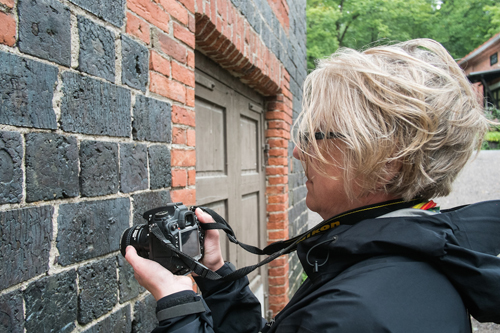
To visit the State Hermitage Museum in St. Petersburg, Russia, you need a special visa that requires a complicated application process. When you arrive in Russia, you’ll have to surrender your passport, and you’d better not even think about overstaying your approved dates.
Despite the paperwork needed to get inside the museum, fine art professor Sandra Rechico says it was all worth it for her summer 2014 visit. “The collections of Old Masters paintings and sculptures were incredible. You’d be in one room with 20 Rembrandts and then walk into the next room full of work by da Vinci.”
What made it even better, an itinerant European biennial of contemporary art called Manifesta 10 was also on display. Rechico loved the opportunity to see the mix of classic works of art and new ones in the same setting. “I could have easily spent a month there,” she says.
This opportunity was one of the benefits of her artist-in-residence semester in a small community near Helsinki, Finland.
Rechico had enjoyed a previous artist-in residence experience in Nelson, B.C., and hoped for something different during her stay in the Finnish village of Fiskars. “Because of the language barrier, it was harder to connect with the local people than it had been in Nelson,” she says. Yet she found much to enjoy on her visit.
“This residency offered a house and a studio, with room to bring your family.” The town itself was originally known for making Fiskars scissors and knives. That industry moved out in the 1950s, but artists have moved into the abandoned factory spaces. The town’s population is only 600, but 120 of those belong to the Fiskars art co-operative.
According to local legend, one of the early Fiskars owners was “a bit of a lunatic,” says Rechico. She was told that he turned the third floor of his house into an indoor forest, then had rabbits released there so he could hunt them. Although the hunter treated his workers poorly, later owners funded a hospital and school for the Fiskars workers and their families.
Rechico says some of the local buildings are constructed with bricks created out of the steel slag the factory produced when making scissors. “It is considered industrial waste but makes beautiful bricks that kind of shimmer.” Tourists from Helsinki frequently visit the village, and most of the artists have open studios with shops attached.
She adds that Helsinki itself is beautifully designed with impressive architecture and streets that accommodate pedestrians and cyclists as easily as cars.
Rechico’s art is often focused on maps, routing, wayfaring and walking. While in Finland she measured the distances from the house where she was staying and the local cafe, grocery store, co-op shop and other locations she visited. She used different colours of thread to measure out those distances and rolled the thread into balls.
“It provides a representation of me moving around the town,” she explains, “but it is confounded by wrapping the thread into a ball so you can’t tell the actual distance.”
Rechico believes the artist-in-residence experience helps her both as an artist and as a teacher. “It gets you out of your regular routine,” she says. “Whenever you travel and have new experiences, you bring that back with you. It makes you think differently, which is always a good thing.”
A travel necessity for Rechico is a good camera, and she’s brought back many images of the discoveries she made in Finland and Russia. “I am excited to share some of these images with my students, especially those that illustrate the dialogue between classic and contemporary art.”